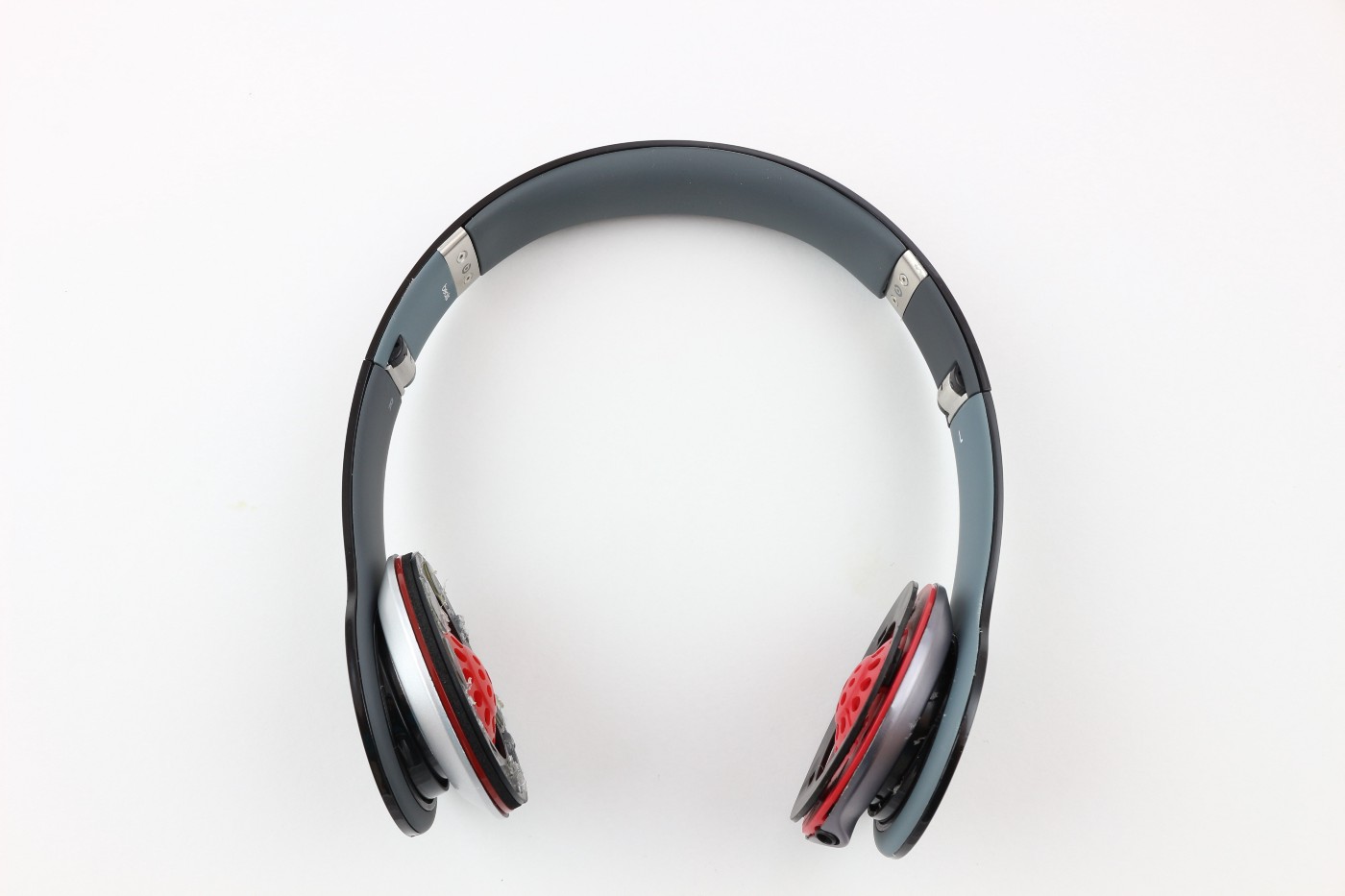
I recently published the first post in a new series where we tear down popular products and analyze how they’re made. Like many consumers, we were fooled into believing that the counterfeit product we purchased was authentic.
After tearing down two more pairs of Beats Solo HDs that we purchased from Amazon and Target, I determined that the differences between the genuine and fake Beats only created an estimated change in bill of materials (BOM) cost of $3.29- increasing from $16.89 to $20.18. While I was surprised to find out that we were sold counterfeit Beats, I was even more surprised to discover that the differences between the authentic pairs and the counterfeit pair were so minimal- the parts were so similar that I was able to build a pair of headphones using half knockoff and half genuine parts.
Metal Coated Drivers
Genuine Beats use a metalized mylar diaphragm, instead of uncoated mylar.
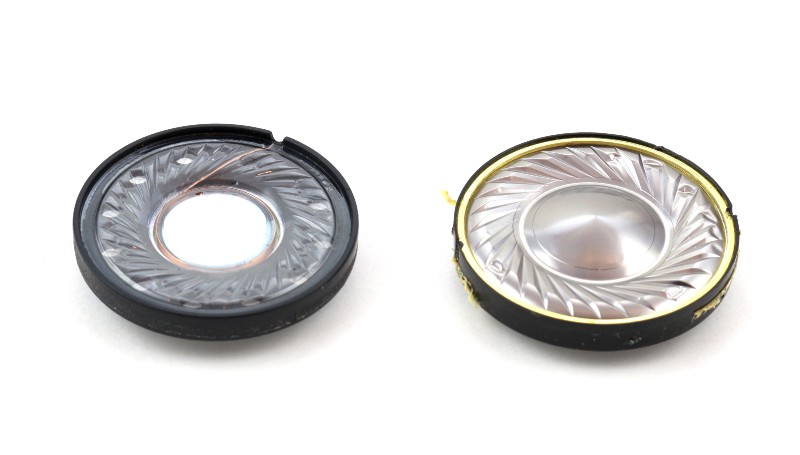
The most obvious difference between the authentic Beats and the counterfeit ones are the drivers. The authentic Beats driver diaphragm is metalized mylar while the counterfeit Beats use uncoated mylar. The size of the magnets in the counterfeit and genuine drivers are identical within few tenths of a cubic centimeter.
Based on this comparison, the new expected cost of a single driver for authentic Beats headphones is $1.50, based on the quantity 10k pricing of a similar driver, AS03608MR-5-R. This is a small increase of $0.60 per driver from the counterfeit pair. Compared to the $199 price tag on these headphones, it is a small difference.
Ear Cups: Metal Shell vs. Spray Paint
Authentic Beats feature metal trim on the ear cup, while the knockoffs use spray paint.
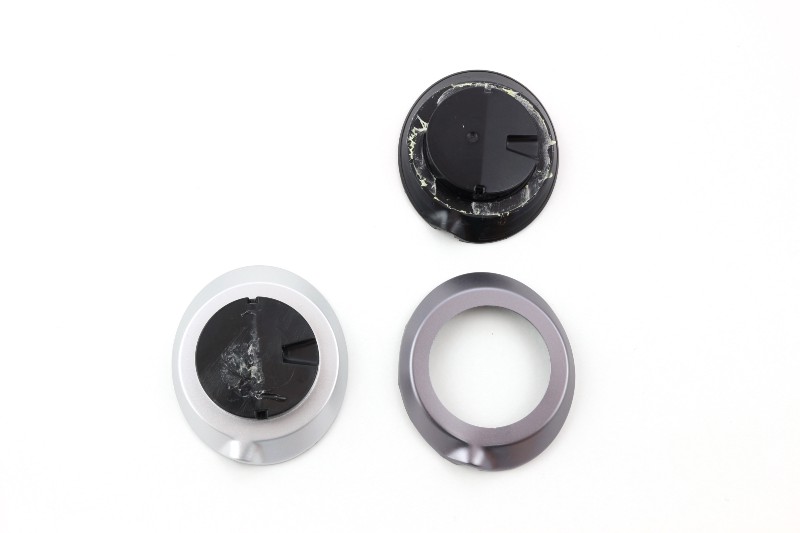
In the authentic Beats, the ear cups are covered with a 0.5mm piece of sheet aluminum that is stamped, formed, and anodized then affixed with glue to the plastic ear cup. The metal part serves as a durable and decorative touch and adds $0.50 to the BOM of the authentic Beats. The counterfeit pair feigns this process with a coat of silver spray paint. The photo above shows the difference between the two. If the counterfeiters had used darker paint, it would be even harder to tell the difference.
Metal Hinges Add Weight
Metal contributes to 33% of the weight for both counterfeit and genuine Beats.
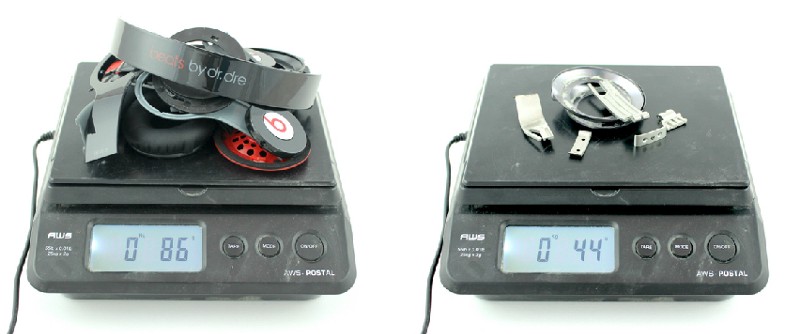
I stand by my original point that these metal parts are there to add a bit of weight and increase perceived quality with a nice look. With the addition of the metal ear cups, metal now makes up 44 grams of the 130 gram product — 33% of the weight.
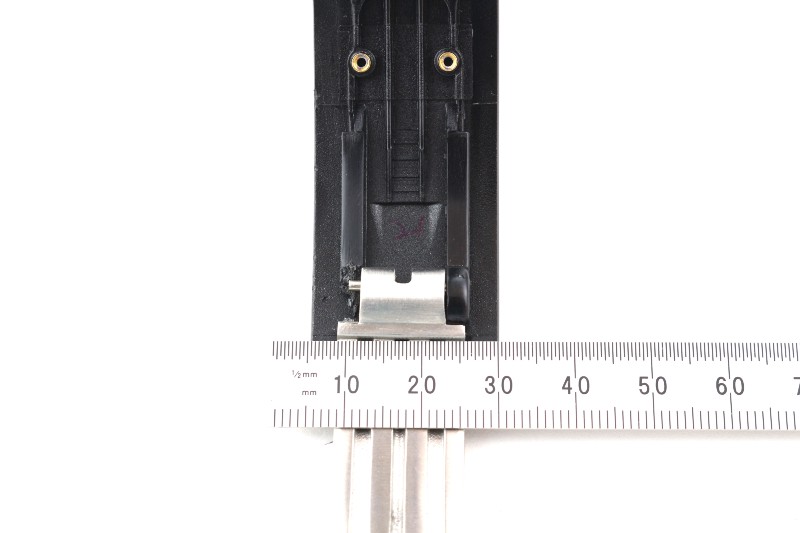
Some might assume that the metal hinges are used for function rather than feel. At first glance this seems reasonable but further disassembly reveals that the metal parts are actually mounted to plastic bosses. Nearly all stress on the metal parts is transferred to these plastic features, which are actually smaller than the beefy metal parts.
Decorative Metal Separates Different Materials
Design elements conceal tricky material transitions.
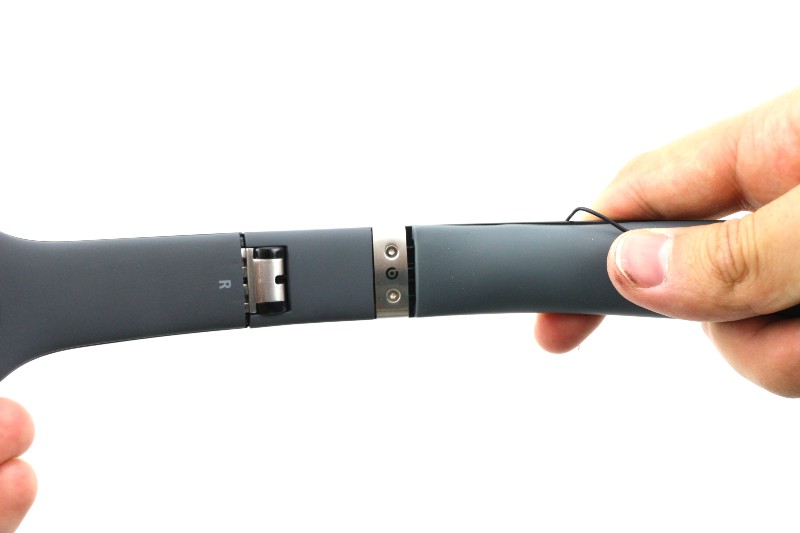
The decorative metal pieces in the headband are just that — decorative. They are not used to trap or hold any of the plastic pieces. These metal dividers cover an area where the material changes from hard plastic to softer silicone rubber. Having the two parts right next to each other accentuates color differences created by making the parts out of different materials, which can be particularly hard to match. Engineers often use a separating feature, in this case the metal band, to visually divide two materials.
Different Metal Alloys Create Minor Cost Differences
Genuine Beats use stainless steel, not zinc. This makes them a bit heavier.
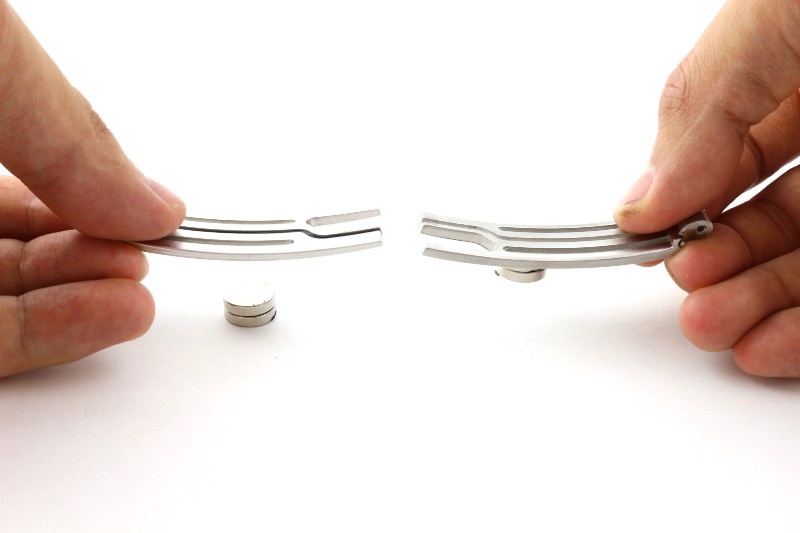
The real question is what the authentic metal parts cost compared to the counterfeit ones. Between counterfeit and genuine Beats, the separator and hinges are almost exactly the same shape and size, but are made of a different material. In the knockoff headphones, the hinges were cast zinc and the separator was stamped steel. The genuine hinges and separators are both cast stainless steel, not zinc.
The knockoffs are non-magnetic, react readily with hydrochloric acid (HCl), and do not spark when ground on a stone wheel. These are the hallmarks of a cast zinc. The real hinge parts are weakly magnetic, don’t react with HCl, and spark when ground on a stone wheel. This indicates that genuine Beats parts are stainless steel. Casting stainless steel is not entirely different from casting zinc, but the tooling is more expensive and does not make as many parts. The material is also slightly more expensive, which makes the total cost difference between the all of the counterfeit cast parts and all of the real cast parts only $1.32.
The Takeaway
Overall the genuine & counterfeit Beats are nearly identical.
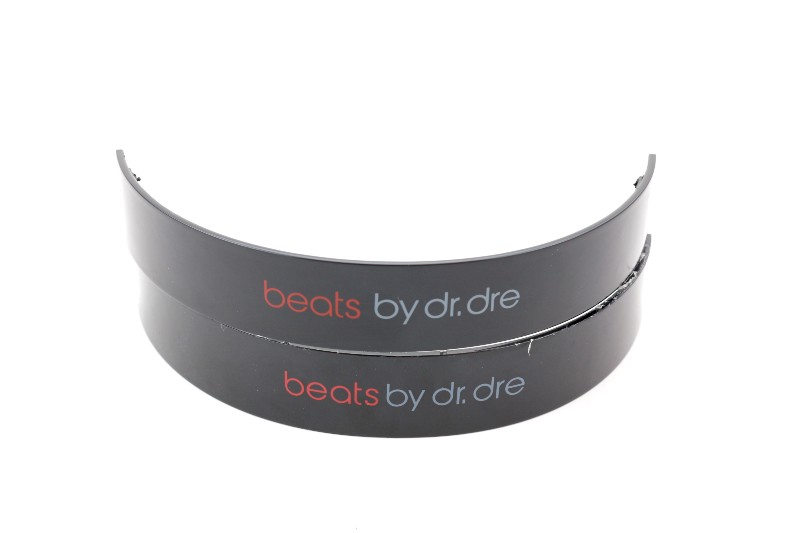
Unless you know to look for metal covers, shiny different drivers and to test the material of the hinges, the counterfeit headphones and the original Beats appear the same. Even the printing on the headband was in the same font, color, and position.
Counterfeiting is a huge problem for hardware companies both big and small. Products like Beats headphones, where the majority of the value comes from the brand are particularly susceptible to flagrant copies making a dent in sales, but counterfeiting can take many forms. From knockoff FTDI chips bricked by windows to counterfeiting K-cups there are plenty of examples of ways counterfeit products can slice into your revenue. It can hurt companies both prior to production, when companies must go to great lengths to ensure their parts are genuine, and during production, when they have to ensure that copies of their entire product are not going out the back door of the factory. It might cost a bit more but it is worth spending some time designing ways to prevent your product from being counterfeited.
If you’re interested in more information, I’ve highlighted the changes to the BOM cost in blue below. I also took all the parts of the real Beats and compared them to the ones found in the knockoff in this gallery of side-by-side comparison photos.
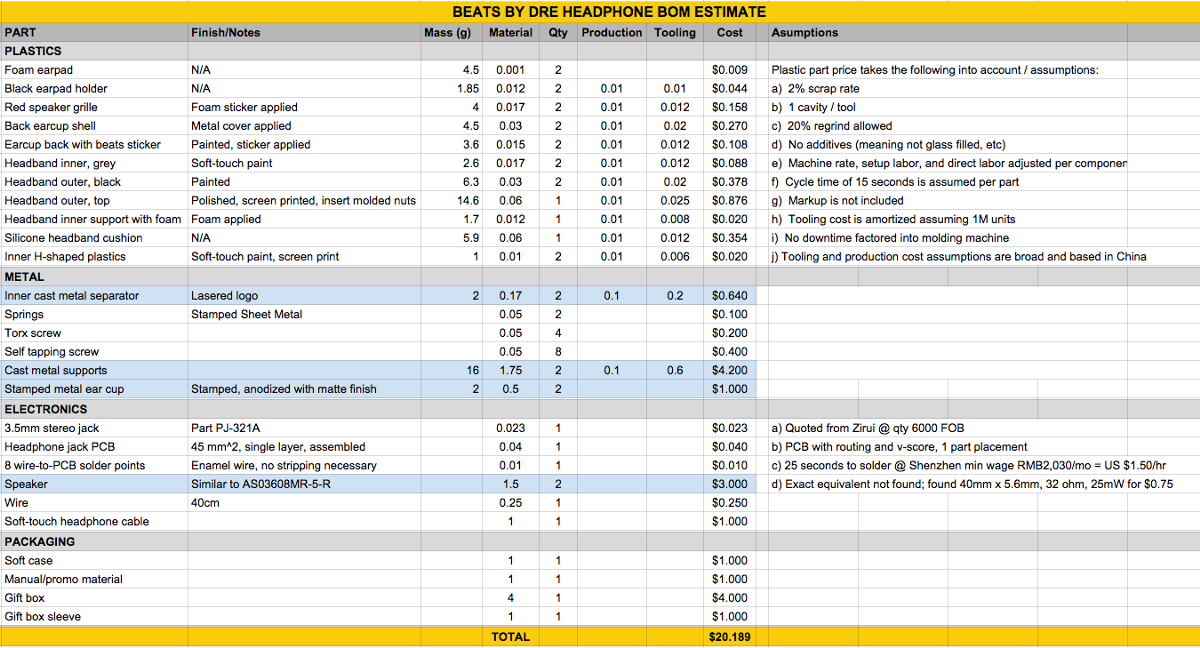
Bolt invests at the intersection of the digital and physical world.
